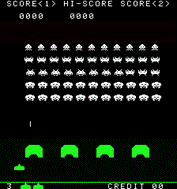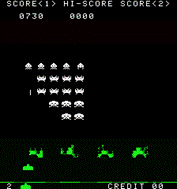Here is a paper I wrote a few years ago but never posted: Variation over Time – The Transformation of Space in Single-Screen Action Games was published in the Space Time Play anthology in 2007.
At that time, I was becoming interested in doing detailed analyses of specific video game designs. (Also evident in my Swap Adjacent paper.) I think it is important to paint the big picture, but I find it interesting to supplement this with more specific examinations of very focused topics. The big and the small pictures are then meant to supplement each other.
Variation over Time concerns the kind of early video game design where variation was provided by opening the playing field during the course of a level. Examples include Space Invaders, (Ms.) Pac-Man, Pengo, and Super Bomberman. From the paper:
My interest here is in a specific way of providing variation, the qualitative change of difficulty that is created by opening the playing field during a game level. This is a type of design where obstacles are gradually removed and the playing field becomes more open as a result. We can see this design in a number of board games (e.g. backgammon, chess, checkers), and it was a popular design in the non-scrolling action video game, most prominently in the 1980s. But for reasons I will discuss later, this design has become unusual in contemporary video games. Consider the early video game Space Invaders (Taito 1977) as a first example. (Figure 1.)


Figure 1. Space Invaders (Taito 1977)
More.
